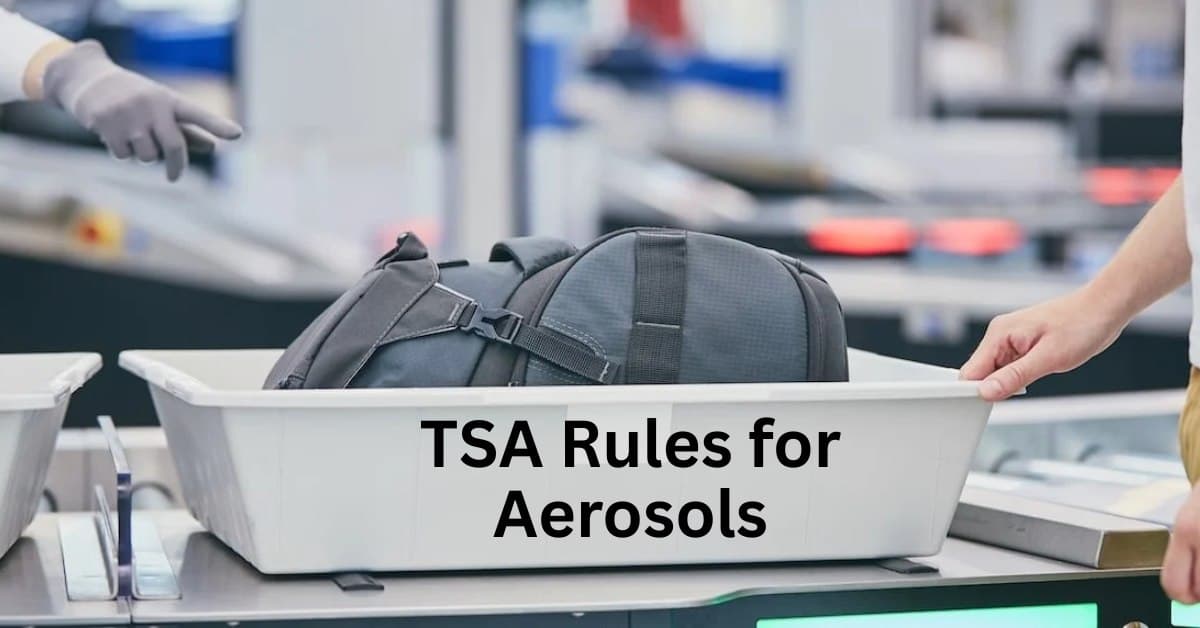TSA Rules for Aerosols: What Aerosols Can You Take on a Plane?
Reviews and Ratings
August, 25, 2025
Few things confuse travelers as much as aerosols when packing for a flight. Many of us use deodorants, hairsprays, shaving creams, and disinfectant sprays daily, but the rules about bringing them on an airplane can feel complicated. As someone in the aviation industry, let me break this down clearly so you know exactly what’s allowed, what isn’t, and how to pack smart.
1. TSA’s Golden Rule: Liquids, Gels & Aerosols Fall Under the Same Rule
The Transportation Security Administration (TSA) classifies aerosols as liquids in the United States. This means they must follow the 3-1-1 rule for carry-ons:
- 3.4 ounces (100 milliliters) or less per container
- 1 quart-sized clear resealable bag for all liquids, gels, creams, and aerosols
- 1 bag per passenger
Example: A 3-oz travel-size hairspray or deodorant is fine in your carry-on. A full-size 10 oz bottle? That must go in your checked luggage.
Also read: Travel & tourism reviews.
2. Aerosols Allowed in Carry-On Bags
You can bring small, travel-sized aerosols (under 3.4 oz each) in your carry-on if they fit inside your quart-sized bag. Common examples include:
- Travel-size deodorant sprays
- Mini hairsprays
- Travel shaving cream or gel
- Sunscreen sprays (travel-size only)
Tip: Make sure the cap is secure to prevent leaks. TSA agents may discard items without a lid.
3. Aerosols Allowed in Checked Luggage
Larger aerosols are allowed in checked bags with a few essential rules:
- Each container must not exceed 18 ounces (500 ml).
- The total per passenger can’t exceed 70 ounces (2 liters).
- They must have a protective cap to prevent accidental release.
Examples allowed in checked baggage:
- Full-size hairspray or deodorant
- Shaving cream cans
- Sunscreen sprays
- Insect repellent sprays
4. Aerosols You Cannot Bring on a Plane
Some aerosols are hazardous and prohibited in carry-on and checked bags due to flammability or safety risks. These include:
- Spray paint
- WD-40 and other lubricants
- Insecticide sprays (except small personal-use repellents)
- Cooking sprays like PAM
- Cleaning sprays containing strong chemicals
- Any aerosol labeled as “flammable” that isn’t for personal care or medical use
5. Medical & Special Use Aerosols
The rules are slightly different for medical aerosols:
- Prescription aerosol medications (like inhalers or nitroglycerin spray) are allowed in reasonable quantities.
- You do not have to place these in your quart bag, but you should declare them to TSA at the checkpoint.
6. Airline Differences & International Travel
While TSA sets the standard for U.S. airports, some airlines or other countries may have stricter rules. If you’re traveling internationally, always check the regulations of your destination country.
7. Packing Tips from the Aviation Side
- Use travel-size products: They’re TSA-compliant and save space.
- Check your labels. If it says “flammable” and is not for personal or medical use, don’t pack it.
- Secure your cans: Always keep caps on. A missing lid is one of the top reasons aerosols get confiscated.
- Bag them properly: Even in checked luggage, put aerosols in a zip bag to avoid a mess in case of leakage.
Bottom Line
You can bring aerosols on a plane, but the rules depend on size, type, and whether it’s carry-on or checked. For U.S. flyers:
- Carry-on = Travel-size (3.4 oz or less) inside your liquids bag
- Checked bags = Up to 18 oz per container, max 70 oz total per passenger
- Prohibited = Hazardous/flammable aerosols (paint, cleaning sprays, lubricants, etc.)
If you stick to personal-care and medical aerosols, pack them securely, and follow the size limits, you’ll breeze through TSA without losing your items
